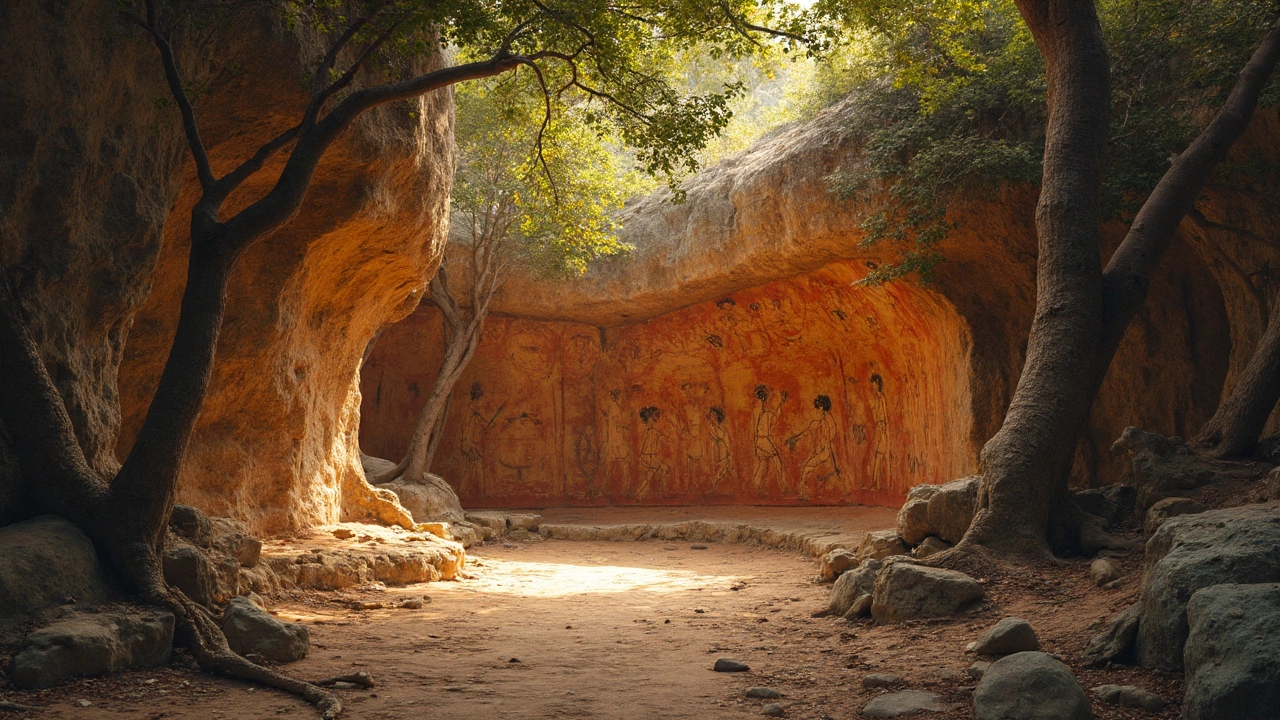Ancient Art: Discover the Symbols, Stories, and Traditions Behind India's Oldest Creations
When you see ancient art, the visual language of early Indian civilizations that encoded spiritual beliefs, social values, and cosmic order through sculpture, painting, and performance. Also known as classical Indian art, it wasn't made to hang on walls—it was made to be lived with, prayed to, and danced around. This isn’t about pretty pictures. It’s about how people in Tamil Nadu, the Deccan, and beyond used color, form, and rhythm to speak to gods, explain the universe, and pass down wisdom before books existed.
Look closer at the blue skin of Krishna and Shiva, a visual code in ancient Indian art representing infinite space, divine energy, and the boundless nature of the soul. It’s not an artistic choice—it’s theology made visible. Same with the Karakattam dance, a centuries-old Tamil folk performance where dancers balance pots on their heads while moving to rhythmic drums, honoring the rain goddess Mariamman. These aren’t just dances. They’re prayers in motion. And the Puliyattam, the tiger dance of Tamil Nadu, where performers wear painted masks and move like wild beasts to scare away evil spirits? That’s ancient art as protection, as community ritual, as living history.
You won’t find ancient art in museums alone. It’s in the way sweets are shaped for Diwali, in the nonsense syllables of bol banao folk singing, in the way temple walls tell stories without words. These traditions didn’t die—they got quieter. But they’re still here, in village festivals, in family rituals, in the way a Tamil grandmother teaches her granddaughter to draw kolams at dawn. The ancient art you see in these posts isn’t relics. It’s alive. And what follows is a curated look at the symbols, stories, and forgotten practices that still shape how millions experience the sacred through beauty, rhythm, and color.
